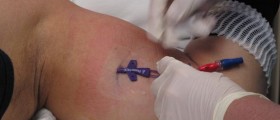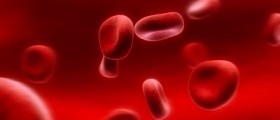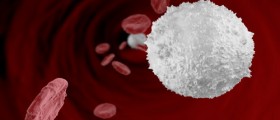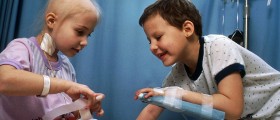
Leukemia in Children
Leukemia is white blood cells or leukocytes cancer. In children, this medical condition is quite frequent.
Leukemia commonly develops in bone marrow, soft material inside bones. Bone marrow normally produces blood cells and platelets. When leukemia occurs, bone marrow starts producing abnormal, immature white cells called leukemia cells. Leukemia cells have a tendency to multiply. If their number exceeds number of normal white blood cells, red blood cells and platelets, it can result in anemia, bleeding, and infection.
Leukemia can exist in four different forms. Acute types of leukemia are lymphoblastic leukemia (ALL) and myelogenous leukemia (AML). Chronic types include lymphocytic leukemia (CLL) and myelogenous leukemia (CML). Acute lymphoblastic and acute myelogenous leukemia are the most common of leukemia forms in children. All type of leukemia usually occurs in children from 2 to 8 years old.
Symptoms of Leukemia in Children
Normal white cells have a role of protecting the body from infections and diseases. Leukemia in children usually results in fever and infection.
Afterwards, children develop anemia. Characteristics of anemia are paleness, tiredness and lack of breath. Anemia occurs when leukemia cells outnumberred blood cells which carry oxygen.
Blood clothing can also occur when platelets are affected by leukemia cells. This is followed by nose bleeding, prolonged bleeding and frequent bleeding.
Leukemia cells can accumulate in the liver, kidney and spleen. Due to which these organs can be enlarged and this will lead to abdominal pain.
Other symptoms of leukemia in children include dyspnea (difficulty with breathing), swollen lymph nodes or swollen glands in the armpit, neck or crotch, headaches, seizures, problems with balance and vision.
Diagnosis
Diagnosis of leukemia in children begins with physical examination to check for enlarged liver or spleen, swollen lymph nodes and other signs. After that, analysis for complete blood count is done. Then, depending on the results of exam and the test, bone marrow biopsy as well as lymph node biopsy could be required.
Treatment for Leukemia in Children
Treatment for leukemia aims to eliminate leukemia cells and restore normal function of bone marrow. Treatment for leukemia in children depends on several factors such as type of leukemia, age of affected child, leukocytes count and chromosomal anomaly. Therapy usually involves chemotherapy and radiation. Another treatment option is transplantation of bone marrow or stem cell. Other treatments for leukemia in children include intrathecal chemotherapy, biological therapy, blood transfusion, antibiotics to prevent infections and medications for disorders induced by side effects of leukemia treatment. Treatment is successful in 90 % of the cases.















Your thoughts on this
Loading...